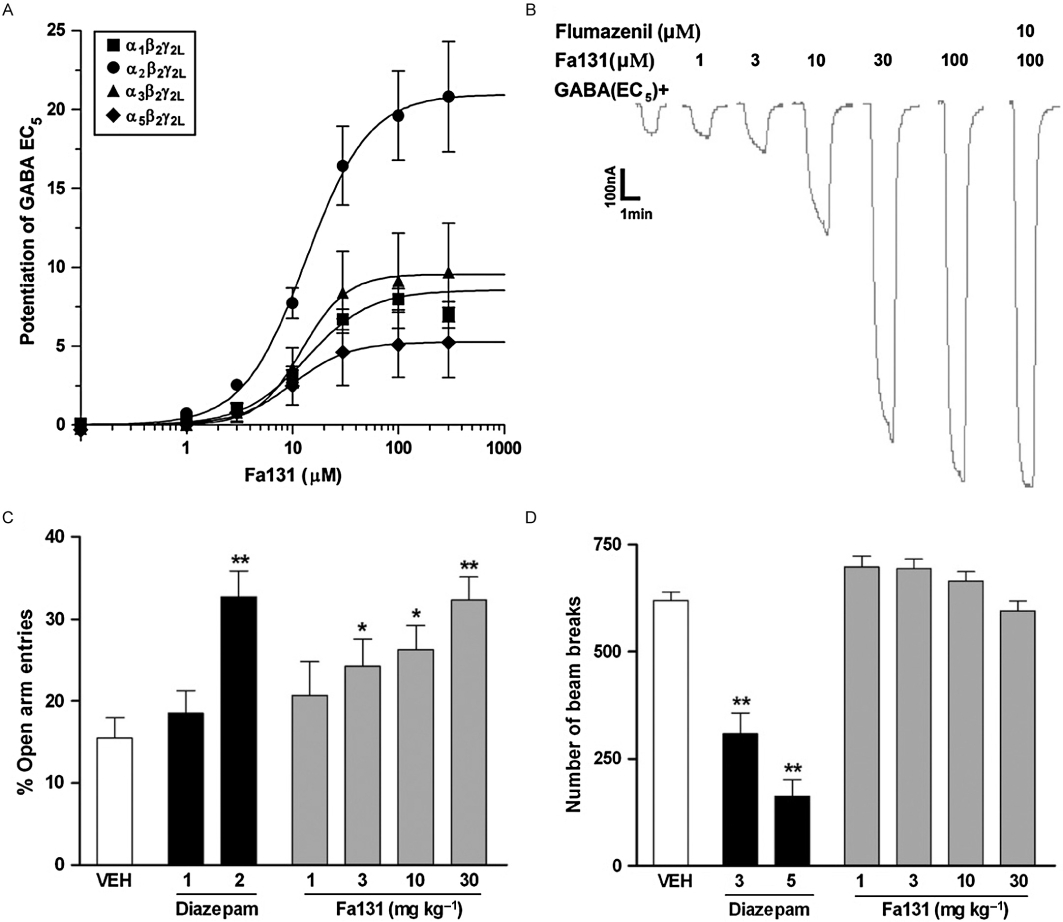Figure 7.

(A) Fractional potentiation of GABA EC5 current response by Fa131 at human recombinant GABAA receptors expressed in Xenopus oocytes. Concentration-response curves on α1β2γ2L, α2β2γ2L, α3β2γ2L, α5β2γ2L receptors. (B) Potentiation of GABA EC5 by Fa131 at GABAA α1β2γ2L could not be blocked by coapplication of the benzodiazepine antagonist Ro15-1788 (flumazenil, 10 µM). (C) Effect of diazepam (1 and 2 mg·kg−1) and Fa131 (1–30 mg·kg−1) on the behaviour of mice in the elevated plus maze. Bars represent mean ± SEM of the % open arm entries % time spent on the open arms recorded over a 5 min session, 20 min after an i.p. injection of drugs or vehicle. *P < 0.05 or **P < 0.01 compared with vehicle group, anova followed by Dunnett's multiple comparison test. (d) Effect of diazepam (3 and 5 mg·kg−1) and Fa131 (1–30 mg·kg−1) on the behaviour of mice in the actimeter test. Bars represent mean ± SEM of number of beam breaks recorded over a 5 min session, 20 min after an i.p. injection of drugs or vehicle, showing a significant decrease in the number of beam breaks induced by diazepam at doses of 3 and 5 mg·kg−1 (P < 0.01). Fa131 did not produce any changes in this parameter at doses up to 30 mg·kg−1. *P < 0.05 or **P < 0.01 compared with vehicle group, anova followed by Dunnett's multiple comparison test. From Fernandez et al. 2008. GABA, γ-amino butyric acid.
